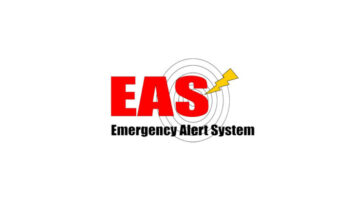The Federal Communications Commission has announced that the next nationwide test of the Emergency Alert System will be held Sept. 27. In connection with that announcement, the FCC released an updated EAS Handbook to be used during the test. Finally, the FCC recently released a stern reminder of the importance of complying with the FCC�s EAS regulations.
First, the announcement of the test scheduled for Sept. 27 establishes a timeline for preparing to participate in the test. EAS participants should have already filed their initial form (ETRS Form One) by Aug. 28. Because this form serves as the framework for the subsequent, post-test reports, it is important to make sure that the station information is accurate. Any necessary changes to the form can be made up to 11:59 p.m. on Sept. 27.

As it did during the 2016 national EAS test, the FCC will be looking closely on the performance of the Integrated Public Alert and Warning System warnings issued by FEMA. These internet-based warnings use the �common alerting protocol� and serve as alternative method to disseminate emergency information via audio and text messages, especially to mobile devices. In 2016, just less than half of national test participants received test signal via IPAWS.
HANDBOOK
Also, the new EAS Handbook replaces all older versions, and must be disseminated to the stations� duty positions/EAS equipment location prior to Sept. 28.
One major change made consistently throughout the new handbook is providing a more-detailed explanation of the requirements for Class D noncommercial FM, low-power FM and low-power television licensees. The new language reminds these licensees that they must have EAS decoder equipment installed, but that these stations are not required to install EAS encoder equipment � although they may voluntarily do so.
EAS participants are required to file the initial �day of test� form, ETRS Form Two, no later than 11:59 p.m. on Sept. 27. Then, the more complete form � ETRS Three � is due on or before Nov. 13. Subsequent to the receipt of the receipt of the third form, the FCC will release a report on the national test, highlighting any common deficiencies or issues to address in 2018.
BE WARNED
Lest a broadcaster believe that the FCC does not take its participating in the EAS program seriously, a recent proposed forfeiture should eliminate all doubt. In 2013, an inspector for the FCC visited the main studio location for a noncommercial FM radio station. During the inspection, it was discovered that the station (i) did not have an EAS handbook; (ii) did not have EAS equipment that could monitor and transmit EAS messages; and (iii) was not monitoring two EAS sources.
Adding salt to the wound, the broadcaster also failed to respond to three Notices of Violations and a Warning Letter issued by the FCC. Its lost-in-the-mail excuse was eliminated because the licensee actually referenced one of the notices and the warning letter in its renewal application. In light of these violations, along with other broadcast violations, the FCC proposed a forfeiture of $66,000, which included a $16,000 upward adjustment due to the licensee�s repeated failure to respond to the FCC.
In sum, all broadcasters should immediately check their EAS equipment to ensure it has the most recent software updates, synchronize its clocks, print out, read and place the new EAS Handbook at the appropriate location, and be ready on Sept. 27 at 2:20 p.m. (EDT) for the National Test.
Petro is of counsel at Drinker Biddle & Reath LLP.� Email: [email protected].
DATELINE
Oct. 1 � Stations with five or more full-time employees in Alaska, Florida, Hawaii, Iowa, Missouri, Oregon, Washington, American Samoa, Guam, Mariana Islands, Puerto Rico, Saipan and Virgin Islands place Annual EEO Public File Report in public inspection file.
Oct. 1 � Stations with 11 or more full-time employees in Alaska, American Samoa, Guam, Mariana Islands, Oregon and Washington file Broadcast Mid-Term Report (FCC Form 397) with FCC and place in public inspection file.






